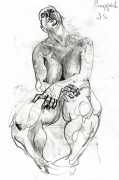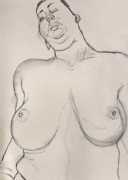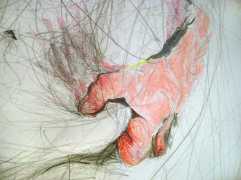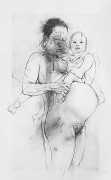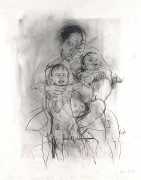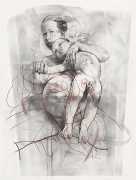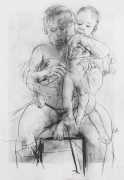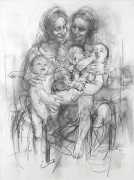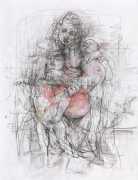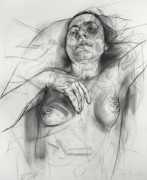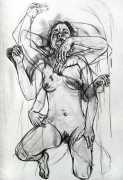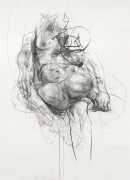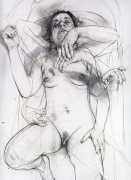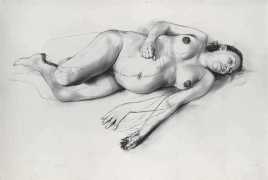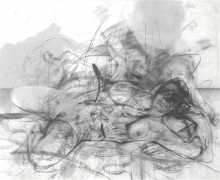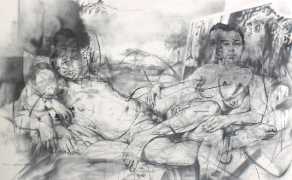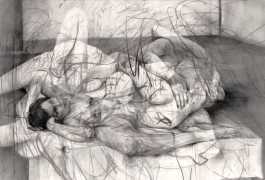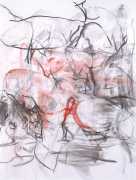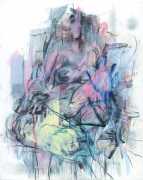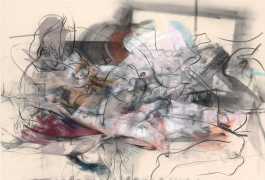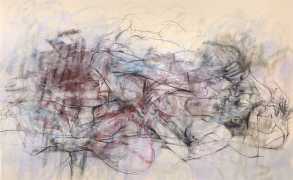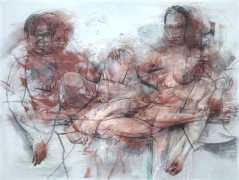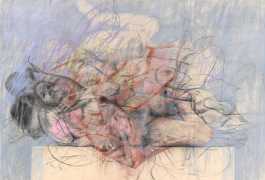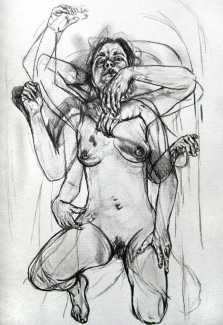
Just like many of the greatest artists, Jenny Saville spends much of her time drawing, including quantities of preliminary sketches for the paintings, especially for the larger set pieces, so here we start with a few sketches for Propped. She also likes to study works of ‘the great masters’, and appropriating elements of them to explore important themes such as her Reproduction series, based on Leonardo da Vinci’s famous Madonna and Child cartoon.
In her earlier years she draw mostly in charcoal, but more recently has discovered the pleasures of pastels, used in a similar way to Degas to produce a subtlety and clarity of colour. As she explained in a recent interview with Nicholas Cullinan, the director of the National Portrait Gallery in London, ‘One of the reasons why colour has come into my work so much recently is because I use pastels and oil bars as intermediaries between drawing and painting. Pastels come in the most incredible range of beautiful colours; when I work with this group of pastels, all the colours are just sitting there. With oil paint there’s a more limited range, and I mix the actual tones. If I need to distinguish the side of a cheek from the front face of a cheek, I can mix a precise tone to do that job. In pastels I can’t do that because they come in a set range. At the beginning it drove me mad, I couldn’t hit that note properly. It forced my hand to come up with another way to make the tone. An artist like Degas uses slats, squiggles, and layers in different colours of pastel to create the tone he’s after. Some of these colours are electric when you identify them individually. So I started to experiment with the same technique, using stronger colours on top of each other to make the tone or to do the job of the tone itself. That’s helped my painting a lot. The late pastels – they just fly. I mean, Degas can be seen as this straightforward artist who painted dancers, and people see him as quite an academic artist. But if you just stand in front of those late pastels and look, that colour is broken up. It’s absolutely majestic. And he did that because those pastels come in incredible colours. During lockdown, this wonderful pastel shop in Paris has been sending me pastels. The shop is called La Maison du Pastel. It was founded by Henri Roché; I think he was the great-grandfather of the current owner, Isabelle Roché, and he made pastels for Degas.’
In these later colour drawings Jenny Saville also explores the creation of works in layers, often depicting the same figures in different positions in the same work, thus bringing a remarkable depth and dynamic quality to the scene.


